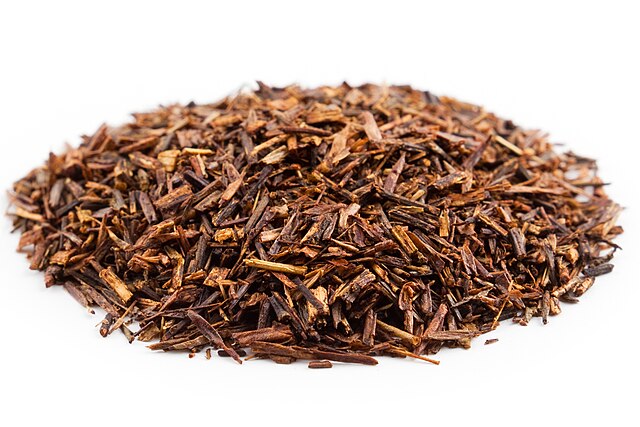Rooibos love is drifting into the Far-East, helping make this specialty tea represent a third of all niche exports from South Africa.
In late August 2025, producers of this caffeine-free cultivar vowed to up exports to Japan to stem the 30% U.S.’ tariffs.
The United States ranks fifth among SA’s export destinations for this tea at nearly 4,361 tonnes, as of 2024.
Due to tariffs, the focus is shifting to trade-friendly markets in the Far-east, one of which already the top destination. This is destination Japan, which in 2018 imported 2,000 tonnes of Rooibos but by 2024 had escalated to 21,153 tonnes.
The tea currently enjoys a select export club of 50 countries, mostly in the European Union (EU). Exports to these 50 markets rose from 5,900 tonnes in 2015 to 9,700 tonnes in 2024, according to the Daily Investor.
Regionally, Botswana (2% export share) and Zimbabwe (1% share) offer a safe net for South Africa.
What is Rooibos?
Rooibos is an indigenous tea from the Aspalathus linearis shrub that grows in Cederburg, Western Cape.
It is exceptional from the Camellia sinensis or conventional tea plant for its deep scarlet tinge instead of green.
Its top selling point, however, is a lack of caffeine, which fuels its love by people fighting weight problems.
Many lovers of herbal beverages of this kind are in yoga-inclined nations such as China, Japan and Sri Lanka. Although China grows a similar tea from Yunnan known as Pu-erh, the country hails the South African rival as a natural pacifier.
Hence, exports to Japan, the EU and African nations target mostly health-conscious upper middle class buyers. It is this buyers’ niche that helped increase shipments by 64% between 2015 and 2024. And as the statistics below show, Rooibos is a rarity pushing the boundaries of a rather low profile local tea industry.
South Africa Tea Statistics
Although South Africa is not a major producer of tea, it has some of the most sought after teas. One of these is Rooibos, a red tea from the Weberg Mountains in Western Cape. This specialty currently makes up 1/3rd of the tea market of the country. The other is green tea of which the country produced 2,800 and 3,500 tonnes in 2021 and 2022, respectively, according to the FAOSTAT. The following table, interpreted from the FAOSTAT, gives an historical glimpse of production trends for conventional tea leaves in South Africa:
| Year | Production [tonnes] | Acreage [Ha] |
| 2023 | 1,811 | 878 |
| 2022 | 1,806 | 876 |
| 2021 | 1808 | 877 |
| 2020 | 1,819 | 882 |
| 2019 | 1,793 | 870 |
How much does South Africa export in tea?
In 2024, South Africa ranked 29th in tea exports worldwide at $25.814 million. This was an improvement by 7.6% from the 2023 marketing season. Despite this high ranking as an exporter, the country remains a net importer as well: in 2024, tea and coffee imports grew by 10%.
Where does South Africa export Rooibos?
In 2024, the country exported 65,529.5 tonnes of Rooibos. Japan led the tally at 21,153.5 tonnes or a 26% share while Germany followed at 15,167.5 tonnes or a 19% share. In the third place was the Netherlands at 8,953.1 tonnes or some 11% portion.
